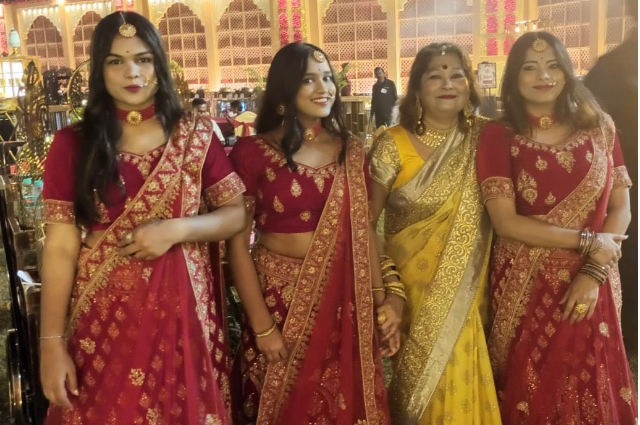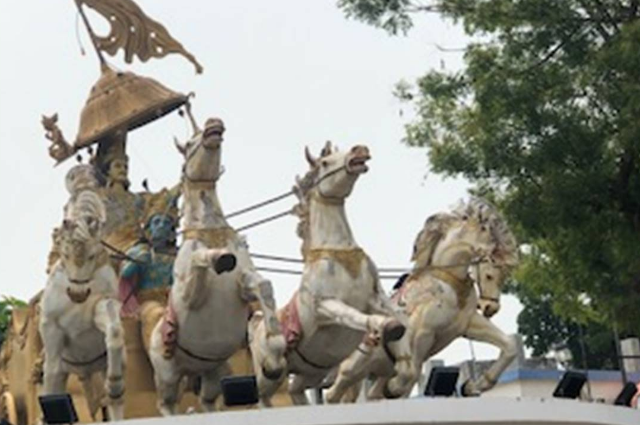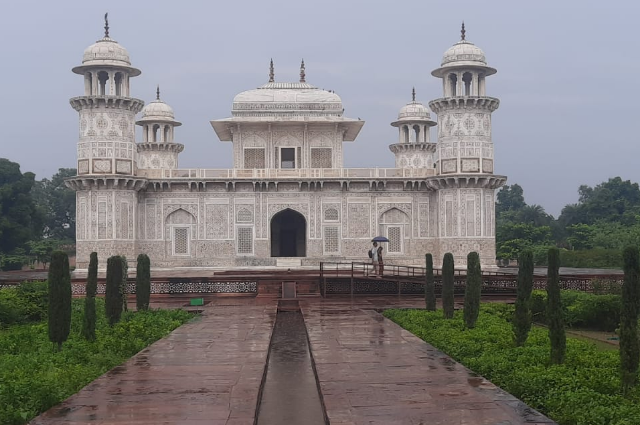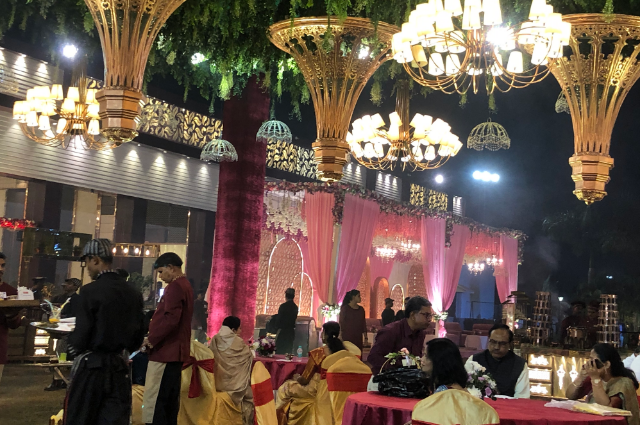
Photo credit: Saikat Kumar Basu
We live in a country called India. But is this just a piece of land that we inhabit, a biogeographical area in the south of the continent of Asia? Is this just a nation that we are all born and grow up, work, age and die over time? Is this just a vast diverse land that has been in existence from time immemorial, that we all take for granted ? What did India meant in the past ? How do we define India at our present time or how do we see the nation grow or develop in the not so distant future ? Else, we may also ask this enigmatic question what is India or what does India mean for you ?
India from multiple perspectives
We may all possibly have different feelings, visions, mixed emotions and love for the country we live in or where we were born. But actually it is important to explore the true meaning of India for us. India historically is a vast nation that historically stretches from the borders of Afghanistan to the modern day Myanmar and spreads to Sri Lanka and other island nations in the south across the Indian Ocean. The current political international boundaries of India following independence from British colonial rule on 15th of August, 1947 is still unsettled in various parts of the country following brutal fights avd disputes. The hard socio-economic and geopolitical realities of the partition of British India into India and Pakistan that lead to unimaginable human misery, violent riots, communal violence, gang rapes, looting, arsenal and loss of innocent lives marks the birth of India and Pakistan as modern sovereign states.

Photo credit: Saikat Kumar Basu
India the NATION state
India, the vast biogeographic region stretches from Kashmir (north) to Kanyakumari (south) lengthwise; and from the Runn of Kutchch (west) to Kohima (east) breadthwise, is rich with her unique ethnic diversity, rich heritage and a glorious history. A land with more than 22 languages and over 540 dialects, numerous tribal communities, forest residents, bustling cities and towns, dotted with villages and hamlets; and is unimaginably diverse in ethnic, social, religious and cultural parameters. This is the only country that has been the birthplace of four world religions, namely Hinduism, Buddhism, Jainism and Sikhism. All other major religious groups such as Islam, Christianity and Judaism are also represented in varied proportion in the present Indian population. A nation that is set to become the country with the largest reported human population by 2030 overtaking China, is the seventh largest nation on this planet.

Photo credit: Saikat Kumar Basu
The spectacular journey of post independence India and her challenges
India has passed through a spectacular and glorious past with an intermingling of various races and nations across the Indian subcontinent. They include numerous Indian aboriginals and their clans, the Sakas, Huns, Kushans, Gurjars, Maurya, Guptas, Palas, Senas, Ahoms, Nagas, Kukid, Tripuri, Lepcha, Gorkha, Mongols, Greeks, Central Asians, Iranians, Afghans, Turks, Tibetans, Chinese, Burmese, Syeds, Ibrahims, Lodhis, Mughals, Pathans, Lankans, IndoChinese, Nepalis, Bhutanese, Sikkimese to mention only a handful. India is a land of great ethnic mixture with lofty Himalayas in the north, desert and salty marshlands in the west to the great Deccan peninsula in the south and the seven sister states comprising the Indian northeast which is biologically, geographically and ethnically continuous with South East Asia. Thus, emergent India is a vast market and corridor connecting Middle East and Central Asia to South East Asia, a region that has endemics economic and geopolitical opportunities.
In spite of the pressure of a massive population, stagnant economy, lack of ample infrastructural developments, slow growth of the economy, high level of corruption, nepotism, political bankruptcy and lack of credible statesman and visionaries with poor leadership, India has emerged successfully as a global powerhouse. India is a major global market for cheaper agricultural products, pharmaceuticals, iron and steel, coal, different minerals, timber products, garments and textiles, plastics, numerous chemical industries, and other industrial products and tools. The rich natural resources of the nation has sustained and fuelled the economic growth of the country post independence along with the support and hard work of both skilled and non-skilled labourers. India is also one of the biggest workforce supplier to the entire planet by virtue of its gigantic population, educational and technical skills, advanced training as well as cheaper price for their service.
India, currently has the fourth largest army on the planet and is a nuclear powered nation; ranking among the top 10 countries across the seven continents. India has reached the status of the sixth largest global economy through her economic development and liberalization policies over the past four to five decades; and by attracting both direct and indirect foreign investments. The nation has made significant progress in the vast areas of modern education, science and technology and engineering with special emphasis to physics, chemistry, biology, statistics, agriculture, pharmacy, biotechnology, medical sciences, space technology, computer science, electrical, electronics, marine and power engineering, information technology, journalism and mass communication; as well in various disciplines related to humanities and sociology.

Photo credit: Saikat Kumar Basu
Indian arts and architecture has a glorious history since the days of the Indus Valley Civilization. The monumental art works depicted in the historic sites of Ajanta, Ellora, Khajuraho, Ekeoganta, Sanchi, Puri, Agra, Lucknow, Mysore, Chennai, Bengal, Rajputana and other parts of India from north to south is an awe inspiring experience for any art critic and art lover. The country provides one of the finest examples of art, artistic superiority in designs, craftsmanship as well as ingenuity. Great names such as Ganesh Paine, Bikash Bhattachrya, Nandalal Bose, Abanindranath Tagore, Ramkinkar Baij, M. F. Husain, Wasim Kapoor to mention only a handful names. Legendary cultural icons of India Raja Rammohan Roy, Ishwarchandra Vidyasagar, Chitanyadev, Sri Ramkrishna Paramhansha, Swami Vivekananda, Netaji Subhash Chandra Bose, Mahatma Gandhi, Chittaranjan Das, Rabindranath Tagore, Satyajit Ray, Mrinal Sen, Ritwik Ghatak, Munsi Premchand, P. C. Roy, C. V. Raman, J. C. Bose, Satyen Bose, Meghnad Saha, Homi Jahangir Bhaba, J. R. D. Tata, Abhijit Binayek Sen, Amartya Sen, Mother Teresa, Bhimsen Joshi, Birju Maharaj, Kelucharan Mahapatra, Lata Mungeshkar, Bhupen Hazarika and others have made us proud as Indian citizens. But at the same time other than cricket, hockey, badminton and kabadi, India’s phenomenal failure in proving herself in various disciplines of modern sports is a monumental pain that every Indian carries in his/her back.

Photo credit: Saikat Kumar Basu
India: A gallery with never ending surprises !!
But truly speaking and expressing, India represents a phenomenon for not just a country, but as our cultural consciousness. This ancient land and civilizations has provided us with the knowledge of Vedas, Puranas, Upanishads, Ayurveda, Artha Shastra, Gita, Tripitaka, Jatakas, Guru Granth Sahib and other enlightened texts and scriptures to enrich our life and knowledge. India, a megabiodiverse country is not just a mixture of unique ecosystems such as mountains, coastal and estuarine areas, islands, deserts, peninsula, hot and cold deserts, open grasslands, mangroves, deciduous and coniferous forests, rich diversity of wildlife, forests and biodiversity; but a nation that stands united in spite of all her diversities and differences.
Food for Thought
Indian democracy has crossed long perilous journey with its subsequent ups and downs and in this new millennium she has made her global presence felt across the planet. Truly, India could have reached great heights if the managing mechanism and the prestige procedures has been better managed; but, none the less…the nation has made its mark on the global platform geopolitically, socio-culturally, economically, militarily and commercially. The ancient civilization has surfaced as a modern sovereign nation with independent foreign and economic policies and an alert global presence. India is not just an ancient civilization with billion plus population; but it has moved up from her Third World status to an aggressively developing country band and an emergent global superpower.
